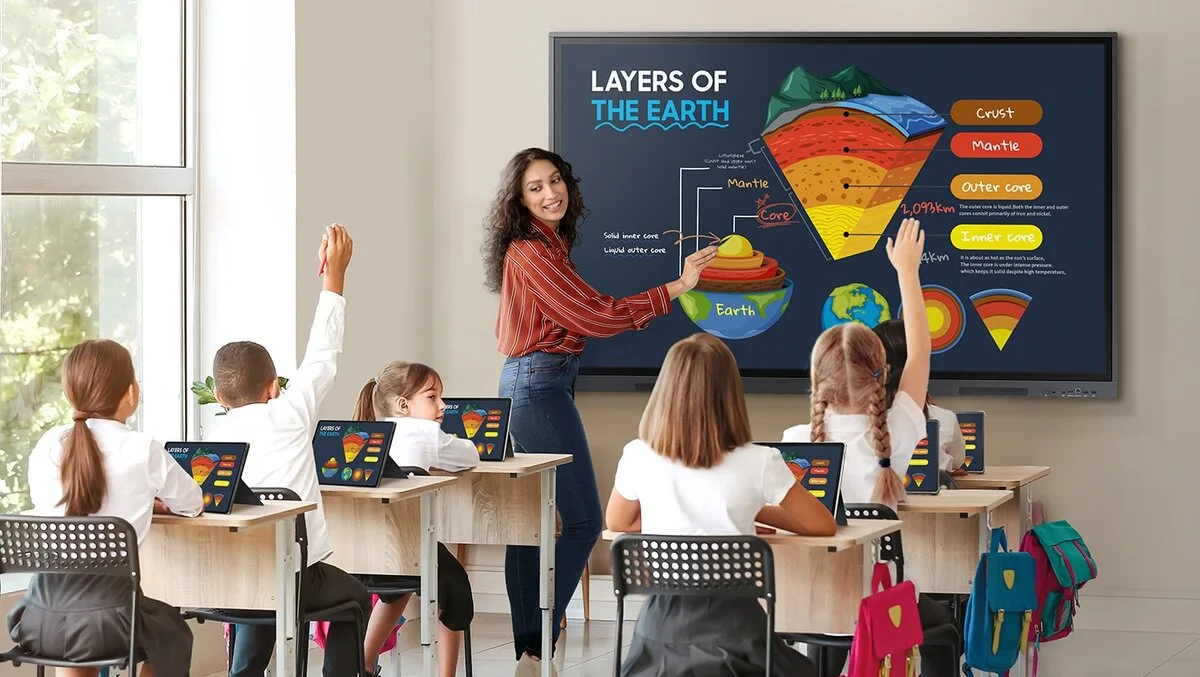
How connected schools are reducing the strain on overloaded teachers
The shortage of teachers across Australia, labelled a crisis by Education Minister Jason Clare, is a pressing concern, with nearly 2,000 full-time vacancies in NSW alone. To address this challenge, school principals are exploring solutions to relieve the burden on existing teachers, leveraging technology to enhance classroom connectivity, collaboration and accessibility.
It's a complex problem that will take time to fix, but school principals must look for ways to take pressure off existing teachers by supporting them with the right technology. This will spread high-value resources to bigger groups, more effectively connect teachers with students in classrooms or online, and provide a more comfortable learning environment.
Power of collaboration
Students learn best when schools facilitate collaboration among them. This is especially crucial for teachers, who, facing various constraints, require adequate tech support to enhance both their own and their students' classroom experience.
Teachers frequently find themselves adapting to new environments, moving between classrooms or even schools, requiring technology that is intuitive and easy to learn. Recognising the digital literacy gap among educators, it's crucial to offer them comprehensive support and a full tech solution to ensure they feel confident with how their lesson plans are being communicated and showcased via key technology. Tools like Samsung's Flip Interactive Display and WAD Interactive eBoard deliver speed, simplicity and compatibility with a wide range of platforms, which simplifies the admin for teachers so they can concentrate on the lesson at hand.
In addition to being easily accessible, technology should seamlessly align with teaching methods, empowering educators to focus on content delivery rather than grappling with tech challenges. By fostering a connected learning environment, students benefit from more consistent experiences, whether in-person or remote, enhancing engagement and communication skills.
Equitable access to digital technology creates connected learning spaces that support innovation and help students develop the job-ready skillsets they need for the future. Samsung's Interactive Displays also offer collaboration features and creative tools that foster critical thinking and peer-to-peer learning, as well as maximising lesson time to focus on the work at hand rather than tech challenges.
Picture perfect displays
High-resolution monitors deliver a new level of clarity, as well as widescreen features that make multitasking more efficient. Samsung's curved monitors help students view content at a glance and minimise eye strain with flicker free eye-saving technology enabling stronger focus.
Whether it's connecting from miles apart through video chat or transcribing a valuable discussion in real time, Interactive Displays provide students and teachers with easier ways to connect, share lessons and assignments, and measure learning progress.
They can easily access remote PCs, tablets, network drives, and third-party software applications for complete access, creating an ecosystem that supports education apps that enhance the curriculum and others that provide simpler ways to connect so both teachers and students can focus their time on working through lessons in the most efficient way possible.
Creating effective spaces
LED displays deliver brilliant picture quality in a range of sizes and configurations. This means teachers can deliver content to bigger groups of students, reaching right to the back of the school hall with vibrant, captivating visuals in a wide variety of environmental or lighting conditions.
With students and teachers spending the majority of the day at school, it's also important to provide them with quiet and comfortable spaces. Samsung's air conditioners are designed to provide consistent temperatures to every corner of every space, keeping classrooms at the optimum temperature, regardless of the season, to minimise distractions in the classroom.
With teaching shortages unlikely to be resolved anytime soon, leaning into smart tech that fosters both connection and collaboration is an important way for schools to make the most of scarce resources while maintaining or improving student experiences.
As education technology becomes more integrated and sophisticated, it will enable teachers to adopt more innovative and interactive lesson plans, opening up new ways to teach the bright young minds in our nation's classrooms.

